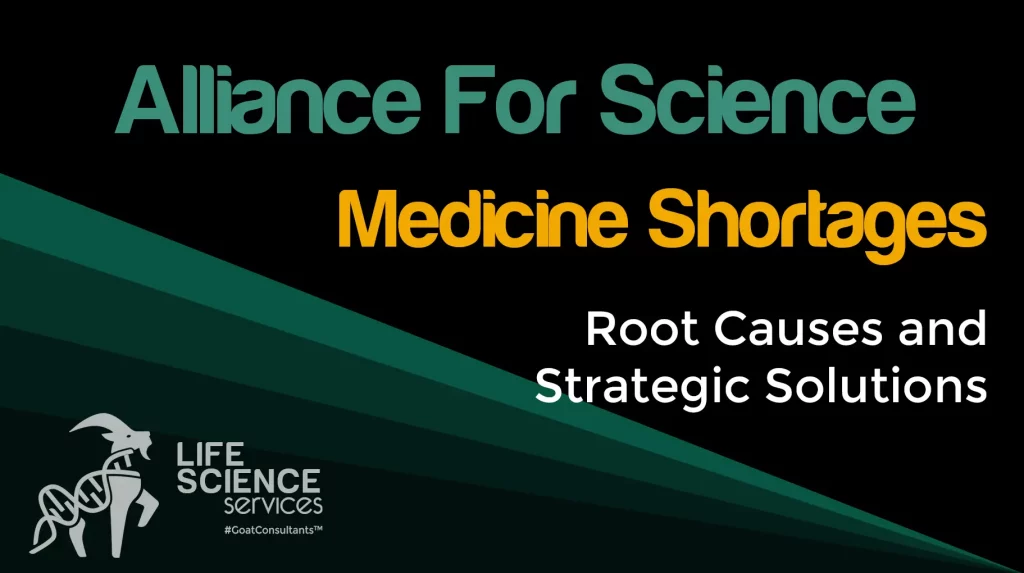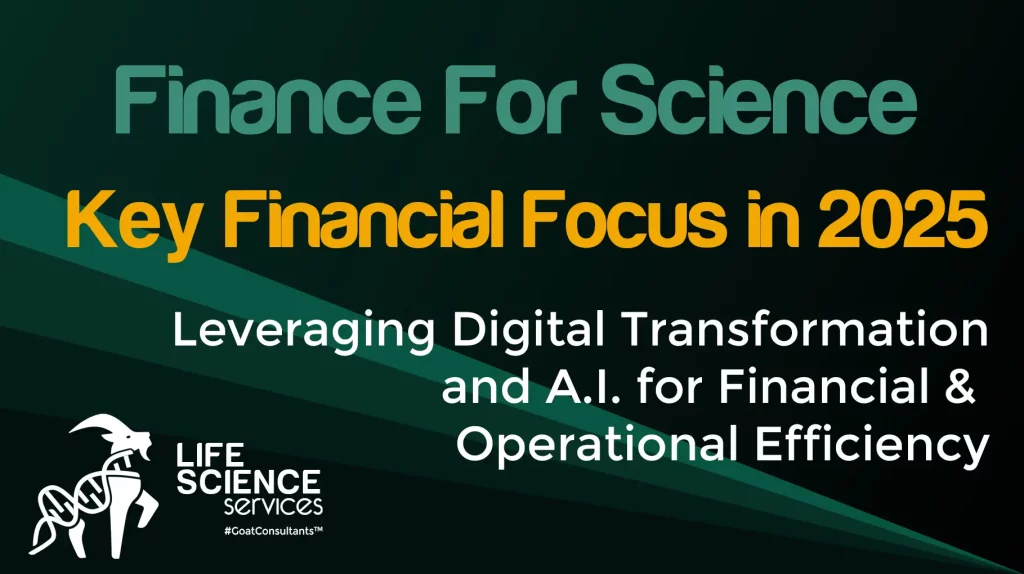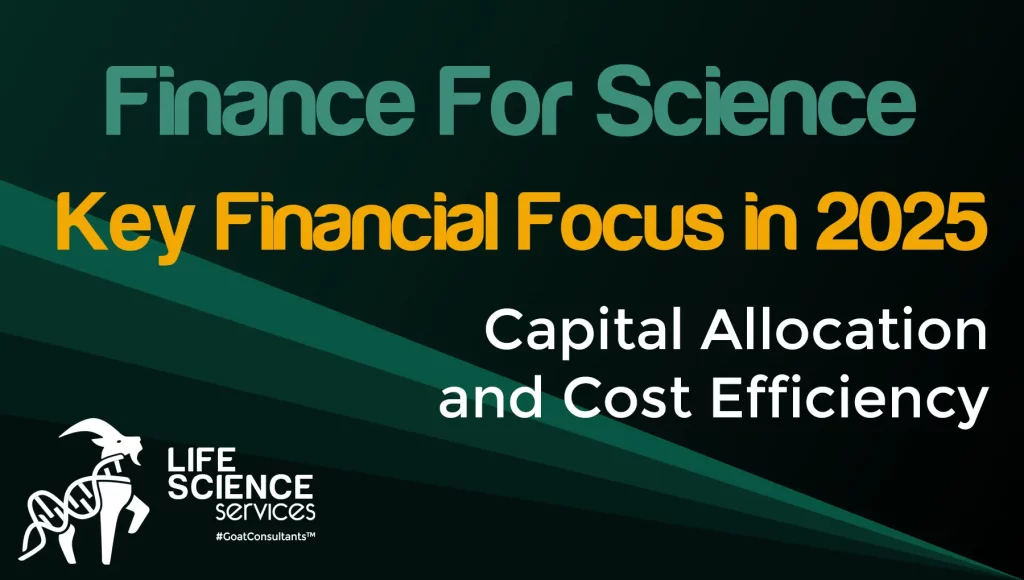Latest News On Tariffs In Life Sciences

The latest news on tariffs in life sciences reveals rising costs, policy risks, and innovation threats. Here’s what executives must know, and do, to stay ahead.
Trump’s Biotech Policy Is Reshaping Global Science and Pharma Supply Chains

Trump’s biotech policy is reshaping global pharma through tariffs, pricing reforms, and reshoring mandates. It is forcing life sciences leaders to rethink innovation, supply chains, and strategy.
Tariff Exemptions in Life Sciences – A Closer Look at the April 2025 Update

🚨 Tariff Exemptions in Life Sciences
❌ Trade policy is failing U.S. pharma & biotech manufacturing.
✅ 60% of pharma inputs & medicines are now tariff-exempt.
❌ But when considering the entire life sciences industry, that number drops to 40%.
🔻 What’s missing?
❌ Medical devices are NOT included.
❌ Manufacturing equipment (CAPEX) is still taxed.
❌ Key biomanufacturing consumables face tariffs.
💡 The biggest contradiction?
Trump’s administration says it wants to “re-arm” U.S. industry—but tariffs still apply to the equipment needed to manufacture medicines here.
👉 How can companies bring production back if CAPEX remains expensive?
📢 What needs to change?
🔹 Exempt medical devices & biotech consumables.
🔹 Eliminate CAPEX tariffs to allow true reshoring.
🔹 Create a comprehensive trade policy for ALL life sciences.
Right now, this isn’t an industrial revival—it’s a half measure.
Licensing Agreements In Life Sciences Amidst Trade Wars and Regulatory Shifts

The Great Rollback is disrupting licensing agreements in life sciences as trade wars and regulatory fragmentation create uncertainty. FDA instability is delaying approvals, causing licensing disputes, while U.S. export controls are forcing European biotechs to reconsider partnerships. To mitigate risks, companies are embedding ‘trade war triggers’ and arbitration clauses in agreements. Meanwhile, the EMA’s regulatory stability offers a strategic advantage, enabling U.S. and Chinese firms to prioritize Europe for faster approvals and market entry. The future of licensing will depend on adaptability, geopolitical foresight, and leveraging EMA’s reliability.
Tariff War In Life Sciences: How to Manage Customs Risks and Costs

The U.S.-EU tariff war is raising costs and tightening customs scrutiny for pharmaceuticals, medical devices, and IMPs. With 25% tariffs on exports, companies can no longer rely on nil-value declarations for clinical trial shipments, risking higher costs, delays, and compliance issues. To navigate this, firms must adopt ERP-driven customs management, ensuring accurate HTS classification, tariff tracking, and duty mitigation to protect supply chains and control costs.
Medicine Shortages in the EU: Root Causes and Strategic Solutions

Medicine shortages in the EU are not a new challenge, yet they continue to disrupt healthcare systems and patient care worldwide. Over 50% of these shortages stem from manufacturing and quality issues, exacerbated by fragmented supply chains, inadequate data management, and reactive crisis handling.
This article dissects the root causes of medicine shortages and offers practical, data-driven solutions for life sciences companies. From strengthening supply chain resilience to leveraging modern ERP systems for early risk detection, we explore how small and mid-tier pharma companies can move from crisis response to proactive prevention.
The key to solving medicine shortages? Organized data, structured processes, and strategic action. Read on to discover how the right approach can transform uncertainty into stability.
Key Financial Focus for Life Sciences in 2025: The Five Pillars of Financial Excellence

In 2025, finance teams in small and mid-tier life sciences companies are transitioning from traditional roles to become enablers of innovation. This evolution is guided by five key pillars:
1. Capital Allocation: Prioritizing strategic planning to balance cost efficiency with investment in high-return areas, ensuring sustainable growth.
2. Diversifying Revenue Streams: Reducing reliance on single income sources by exploring licensing deals, partnerships, and geographic expansion to mitigate market volatility.
3. Mergers & Acquisitions Trends: Adapting to M&A landscapes influenced by GenAI and ESG priorities, requiring agile strategies and leveraging niche expertise to stay competitive.
4. Regulatory and ESG Compliance: Proactively integrating stringent regulatory requirements and robust ESG practices to build trust and long-term value.
5. Digital Transformation and AI: Embracing AI-driven insights and automation to eliminate inefficiencies, allowing finance teams to focus on strategic initiatives.
By focusing on these pillars, finance teams can effectively navigate the evolving landscape of the life sciences industry in 2025.
Leveraging Digital Transformation and AI for Financial and Operational Efficiency in 2025

In 2025, digital transformation and AI are fundamentally reshaping financial and operational landscapes in the life sciences sector. CFOs and executives in pharma, biotech, medtech, and biopharma are adopting strategic approaches to navigate these changes effectively. Key priorities include automating routine tasks to free up resources for strategic activities, leveraging real-time data analytics for informed decision-making, integrating cloud-based ERP solutions with AI tools for scalability and continuous innovation, and enhancing cybersecurity measures to protect sensitive data. Effective data management is crucial, as AI’s success depends on accurate, complete, and structured data. Investing in robust data governance frameworks ensures data quality and integrity, positioning businesses for long-term success in this evolving landscape.
Future of Healthcare 2025: Mastering Regulatory Landscapes

Regulatory shifts and ESG integration are reshaping life sciences. The EU Data Act (Sept 2025) mandates easier access to user-generated data, while the Biotech Act enforces stricter guidelines for gene therapy and personalized medicine in both the EU and US. ESG principles are now essential for investor trust and long-term growth. To stay competitive, companies must embrace compliance, sustainability, and digital transformation.
How Small and Mid-Tier Life Sciences Companies Can Shape M&A Trends in 2025

In 2025, small and mid-tier life sciences companies are significantly influencing mergers and acquisitions (M&A) by leveraging innovation, flexibility, and niche expertise. These agile firms excel in developing cutting-edge therapies and technologies, particularly in specialized markets like rare diseases and personalized medicine, making them attractive partners for larger organizations. Their ability to adopt creative deal structures, such as revenue-sharing models and joint ventures, allows for scalable growth without full integration. Additionally, the use of AI-driven tools in due diligence processes enhances transparency and accelerates deal execution, setting new industry standards. By embracing these strategies, small and mid-tier companies are not only attracting lucrative deals but also redefining M&A dynamics in the life sciences sector.
Diversifying Revenue Streams Beyond Core Products

In an increasingly competitive life sciences landscape, CFOs of small and mid-cap pharma and biotech companies are strategically diversifying revenue streams to address patent cliffs and market uncertainties. This shift goes beyond risk mitigation to ensure sustainable growth and innovation. From digital health technologies to strategic alliances, diversification has become critical for success in 2025. Companies are moving beyond traditional drug development to explore digital therapeutics, AI-driven diagnostics, and personalized medicine solutions. This evolution is especially vital for smaller players competing with larger pharmaceutical companies. Through diversification, companies protect against market volatility while driving healthcare innovation. Digital technologies and strategic partnerships create new opportunities in the evolving healthcare landscape.
Capital Allocation and Cost Efficiency in Life Sciences

Small and mid-cap life sciences companies face mounting pressures in 2025. With increasing market volatility, limited resources, and fierce competition, many CFOs are struggling to direct capital allocation and cost efficiency effectively. Inefficient capital allocation not only slows innovation but can also lead to missed growth opportunities, delayed product launches, and financial instability. If left unresolved, these challenges could jeopardize strategic priorities, reduce shareholder confidence, and compromise long-term sustainability. For companies in biotech, pharma, and biopharma, the stakes are especially high as competition intensifies and access to funding tightens. CFOs must act decisively to align resources with business goals and ensure efficient financial operations.
Mastering Licensing Agreements Financial Management for Life Sciences Success

Effective financial management of licensing agreements is crucial for small and mid-tier life sciences companies, as these agreements provide essential funding and strategic collaboration opportunities. To navigate the complexities of licensing, companies should adopt best practices such as aligning milestone payments with key value-driving events like clinical trial successes, tailoring royalty structures to market realities through tiered models, and leveraging modern ERP systems. These systems offer integrated project management and real-time tracking of milestones and costs, enhancing transparency and efficiency. By implementing these strategies and utilizing advanced financial tools, companies can foster innovation, mitigate risks, and build partnerships that drive the development of life-changing therapies.
Is Finance The Weak Link in Biotech Innovation?

In 2025, financial innovation is pivotal for small and mid-tier life sciences companies aiming to navigate complex licensing agreements effectively. Implementing modern Enterprise Resource Planning (ERP) systems is essential, as they centralize data, automate tasks, and integrate AI capabilities, thereby enhancing financial operations. By adopting best practices and leveraging technology, companies can build partnerships that foster innovation, mitigate risks, and deliver life-changing therapies to patients worldwide.
Poor Cash Flow Reporting Holds Back Life Sciences Innovation

Finance teams in small to mid-cap pharma and biotech face complex cash flow management issues under both US GAAP and IFRS. Cash flow statements often reveal a troubling gap: they lack the actionable insights needed for strategic decisions. In an industry where every dollar counts, failing to address these limitations jeopardizes a company’s financial agility and its survival. Major pain points include the pressure to classify cash flows accurately as operating, investing, or financing activities, and the added complexity of foreign currency transactions due to fluctuating exchange rates. Mergers and acquisitions further complicate reporting, requiring precision in separating acquisition-related expenses and liabilities. Additionally, transactions like contingent considerations and stock compensation arrangements bring unique challenges in presenting clear and accurate cash flows, often leading to confusion and restatements.
The Value of Your Company Unveiled Thanks to Modern ERP Financial Reporting

In small and mid-cap life sciences companies, finance teams are stuck in legacy accounting practices that stifle innovation. Bloated Excel sheets, convoluted explanations, and feedback loops that feel more like interrogations leave R&D teams frustrated and distracted. These outdated processes don’t just waste time—they erode the value of R&D itself. It’s time for non-finance leaders to demand streamlined, transparent tools that support growth, not block it.
As a result, the journey from lab to market hinges on the seamless integration of R&D with strategic financial oversight.
Below, we explore why CFOs – and stakeholders – must rethink their approach, replacing outdated methods with more modern and integrated solutions to protect and amplify R&D success.
Outdated Accounting Practices Hold Back R&D Success

In small and mid-sized life sciences companies, outdated accounting methods in finance are causing more harm than meets the eye. Legacy systems—marked by complex Excel spreadsheets and lengthy feedback loops—are overwhelming R&D teams. These inefficient practices waste time and drain the value of R&D, leading to delays in innovation. It’s time for non-finance leaders to push for streamlined, transparent accounting tools that drive progress rather than hinder it. The path from lab to market depends on integrating R&D with modern, strategic financial oversight. CFOs and stakeholders must embrace up-to-date, integrated solutions to secure R&D success and company growth.
Outdated Accounting Processes Hinder Revenue Recognition Efficiency

Outdated accounting processes in small and mid-sized life sciences companies significantly hinder revenue recognition efficiency. Reliance on legacy systems and manual methods leads to inaccuracies and delays, especially when scaling operations. To address these challenges, companies should modernize their financial processes by implementing advanced ERP systems and adopting automation. These changes will improve accuracy, efficiency, and scalability, ensuring compliance with revenue recognition standards like ASU 2014-09 and IFRS 15. By upgrading systems, companies can streamline revenue recognition, ensure compliance, and drive growth. 
Shipping IMPs for Clinical Trials in Europe: Best Practices

Shipping Investigational Medicinal Products (IMPs) for clinical trials in Europe is a critical yet complex process. IMPs, being unapproved drugs used in clinical trials or Early Access Programs (EAPs), require meticulous handling to navigate customs regulations, value-added taxes (VAT), and specific local requirements. Common mistakes in this process can lead to significant delays and increased costs. To avoid these pitfalls, it’s essential to understand and adhere to best practices, ensuring compliance and efficiency in the supply chain. For a comprehensive guide on these practices, refer to the full article.
Strategic Success Framework – The Rule of Threes

This framework emphasizes the three critical elements for sustainable success in the biopharmaceutical industry:
1. **Key Objectives for Growth**: Focus on maximizing pharmaceutical innovation returns, enhancing patient engagement strategies, and developing internal digital skills.
2. **Organizational Purpose Strategies**: Establish long-term goals, maintain stakeholder connections, and utilize employee talents effectively.
3. **Critical Focus Areas**: Advance research and development, create value for stakeholders, and prioritize people within the organization.
The framework aims to balance technological advancements with fundamental principles, ensuring companies can thrive by delivering value to patients, shareholders, and employees.
CxOs challenges for 2023 in the Life Sciences sector

In this article, we’ll explore some of the key trends that will shape the life sciences industry for the next years to come (2023 and beyond). We examined how companies are responding to these new needs, and what CxOs can do to stay competitive as these trends develop in every business function. The life sciences sector is under perpetual transformation. When we published our first article in November 2017 (see the article here), the need for innovation, digitalization and AI were impacting only support functions such as finance and HR. The COVID-19 pandemic accelerated the digital conversion, companies largely adopting the cloud but its benefits for organizations remain uncertain. If it wasn’t for COVID-19, many companies probably wouldn’t have converted to cloud. Companies are evolving slowly to the digital era. But why? A more holistic approach is needed by setting long-term strategic digital objectives across business and core functions. Internal metrics to benchmark digitalization investments are a must. Knowing the Business Value and ROI requires to assess and identify where digital capabilities could be scaled more effectively. What is next? Focus on Patients, (lots of) Data, Predictivity, Agility and Resilience! To be attractive to investors and remain competitive, companies must scale digitalization. The objective is not anymore to reach “agility” it is to meet the demand of regulators and patients. Regulators require companies to use data more widely and efficiently throughout the lifecycle of a medicine, from preclinical development, through the clinical trial process, and into real world. Recent studies demonstrated that hybrid clinical trial models, mixing digital and face-to-face interactions, highly increase patient engagement and focus. It allows to better understand patient preferences during the evaluation process and make clinical development and regulation more cost-effective. On the strategic side, the ability to detect and execute alternative scenarios to disruptive events and business opportunities, will be key. Companies cannot rely on one scenario and one-forecast model. CxOs must focus on offsetting higher costs by exploring different strategies and new paths for liquidity and growth while implementing actionable plans to increase return on pharmaceutical innovation (RPI) and productivity. Every business function is required to be transparent and participate in producing insights to enhance the patient experience, increase the value chain, from molecule development to commercialization. The following is our review about the 8 areas of what life sciences companies need to focus as they prepare for 2023 and beyond. 1) Patient Experience The strategic priority is to develop patient services and cover more than access to therapy and engagement such as funding. Investments in patient-centric digital capabilities to build around patience experience, will help anticipate needs and expectations thanks to predictive measures built on the analysis of patients’ data. 2) Drug Development To stay ahead of the curve, companies must focus on reducing costs to bring an asset to the market to improve the return on pharmaceutical innovation (RPI). Hybrid clinical trial models highly contribute to cut costs, while accelerating completion of the trial and supports patients’ engagement. Another option to improve RPI is to co-develop assets. Novel therapeutic platforms can accelerate development of priority therapeutic areas (rare diseases and gene editing technologies), but they remain expensive and complex to develop. Collaborations and scientific partnerships are a great way to reduce costs and improve performances. The rise of AI and machine learning tools to analyze data also contribute to improve trial designs, including recruitment of more diverse patients, which is also material for ESG (see point 5 below), and addresses regulators’ requirements in terms of Real-world data (RWD) and Real-world evidence (RWE) data. Finally, data management has become increasingly complex as more stakeholders become involved in clinical trials and other aspects of R&D. This creates challenges for companies trying to make sense of the data they collect while also protecting patient privacy rights under GDPR regulations. 3) Regulatory (excluding local policies changes). Companies should accelerate the integration of science and technology in medicines development. Regulators require more evidence which cannot all come from clinical trials. Thanks to digital collaboration, demonstrating real life value, starting from R&D and thru increase patient involvement, will participate to gathering more collaborative evidence generation for better scientific quality of evaluations by the regulators. Enabling collaboration with healthcare systems as early as possible, by considering rolling reviews which can be considered outside of public health emergency. 4) Supply Chain Supply chain disruptions will reach levels never seen before in 2023 thus secure multi-sourcing capabilities is key as well as delivering products on time will keep high customers confidence and trust. The procurement function will become central to detect and prevent disruptions: 5) Environmental, Social and Governance (ESG) Life Science is also concerned by ESG to transition to a more sustainable way to making medicines across the value chain; reduce waste and greenhouse gas emissions (GHG). Furthermore, PAYERS are increasing pressure in drugs pricing. Innovation shall be used to reduce costs and provide a wider access to medicines and treatment to patients. Diversity: in clinical trials was well as in companies’ leadership. Companies must integrate ESG goals as part of corporate strategy and develop transparent metrics which will allow 3rd parties to follow improvements. Companies mastering ESG have a better reputation and it also positively impacts employees retention. 6) Finance The economic climate and inflation are putting finance teams under pressure. The challenge to keep costs under control, while dealing with rising interests, increasing energy costs and higher working capital require accuracy in forecasting and the ability to re-forecast and plan multiple scenarios in a couple of days. This requires digital tools capable to handle financial and non-financial data. Finance and tax teams are also key stakeholders for financing options: by supporting due-diligence processes in technology and research collaborations, M&A and IPO-readiness as well as licensing deals. 7) Human Resources Life Science companies must outsmart other sectors to attract data science and digital people which is a challenge: digitally native organizations do not have legacy systems and are generally more agile, with a trendier mindset, than traditional
What will impact the CFOs lifes in 2018?

As world is accelerating, every year faster, to more digital and all-service economy, 2018 will be a pivotal year for the finance function. You may have read similar comments in the past years, but you have not seen many changes in the finance functions. You still: Is this your budgeting process? If yes, I am afraid to inform you that you missed the train… However, 2018 is the perfect year to catch up. You believe that only “digital companies” are concerned by new laws and directives and as you run a traditional business it does not apply to your company. Once again, I am afraid to inform you that every company is a technology company now. You are not convinced? Please answer the following questions: If you answered “yes” to any of the questions above it means that your company is a technology company, at least in the opinion of the OECD and your country tax department. Hereafter we will present you what topics we foresee as game changers in 2018, with their risks and opportunities: Cloud Technology savvy people will think that “the Cloud” is no longer a disruptive technology. It is a false statement for the finance function. Planning, budgeting and forecasting (PBF) is widely out of scope when companies move to the cloud: only 10-15% of companies have moved PBF to cloud based solutions. The reasons for such a low conversion to the Cloud are numerous but the most common are: Whilst companies which have moved PBF to the cloud report the following benefits: What are the risks if your company does not migrate the PBF (and other functions) to cloud based solutions: To summarize, the first step in modernizing the finance function is to move the operations to the cloud but make sure you implement the adequate processes, rather than copy/paste your current processes. Blockchain Blockchain is the foundation of crypto-currencies such as the Bitcoin. The Wikipedia definition of blockchain: “it is a continuously growing list of records, called blocks, which are linked and secured using cryptography. Each block typically contains a hash pointer as a link to a previous block, a timestamp and transaction data. By design, blockchains are inherently resistant to modification of the data.” We often read terms such as “the supply chain blockchain” or the “finance blockchain”. In fact, Supply Chain and Finance are blocks linked to the same list of records. To summarize, blockchain is your product/service/transaction DNA, or genetic code. Why should CFOs consider adopting blockchain technologies? In addition to the business and finance partners pressure, the benefits of adopting the blockchain technology are: Of course, adopting such an early technology has it risks, and pursuing a full integration of blockchain could be very expensive to early adopters: To summarize, auditors perceive the blockchain ledgers to have the potential to solve the problems associated with standardisation, reliability and compliance. The fact that blockchain has received the confidence of all major financial institutions (banks, insurances, VCs) may force corporations in the need of funding to adopt it. In our opinion, it is difficult to predict exactly how huge the impact of the blockchain will be on the finance function. Artificial Intelligence (AI) AI and blockchain are inseparable. However, unlike blockchain, AI is perceived as a threat to the finance function: Natural language processing (NLP) and Robotic process automation (RPA) are concepts which are already being tested by Big4 companies. Big4 are already playing the game of men versus machines. RPA technology is being compared and benchmarked versus human brains. They use comparative methods to fine tune machines conclusions using human thinking. In the meantime, NLP is used to fill in hundreds of thousands of standard documents such as leasing contracts. Contracts are reviewed by real persons using the same sample criteria as any financial audit. Big4 companies can afford the luxury to test and roll out these technologies while having clients paying them for what is a massive UAT (user acceptance testing). In the short term (1-2 years), we do not recommend to CFOs to go on the direction of AI. We would rather recommend investing in cloud and blockchain solutions. ROI to implement AI technologies could be fast, but only for companies treating huge amount of transactions in millions. In the mid-term (3-5 years) we believe that AI technologies will play a significant role in fraud detection: if audits used to be based on samples, AI technologies will be able to review entire blocks of data downstream and upstream. As an example, AI technologies will recognize a fraudulent payment to a party under Anti-bribery and/or FCPA regulations. In addition, travel expenses will no more be a hassle for the accounting teams: NLP technologies will be able to code and process any expense claim, in line with the company travel policy with milliseconds! Our conclusion about AI is that it will simplify the world of finance and translate complex transactions into comprehensive steps. We don’t see AI as a threat to the finance function but as a perfect tool to support decision making by providing unquestionable proof of concept. Stay tuned for the next article. About the author: Rui M. Teixeira is a finance professional with over 20 years’ experience including 10 as independent management Consultant. The objectives of his articles are to share his professional experiences and feelings about the professional world. Disclaimer Unlike Big4, large consultancy firms and the EU Commission, our company does not have dedicated resources to research and investigate about the current trends which impact the world of business. You will understand that we do not openly share our sources. However, if there is a piece of information for which you would like to see the source/reference or to further discuss it, please do not hesitate to contact us specifying what paragraph you are looking for.
« The system is not working ». The rise of Blockchain and Artificial Intelligence (AI) in finance future

“The system is not working!” Who as a finance leader never heard this feedback as one of the reasons why, as usual, closing the books is going to be late? One entity provides late financial information and the entire group face the risk to miss the deadline. Then days later while reviewing the numbers with your teams, and after several hours of video-conferencing, you conclude that some entities report different numbers (in same GAAP ledgers), and you wonder why the visual dashboards shown are different across entities? It is now D+20 and your company books do not look straight, forecasts are not aligned. Another rough time ahead on explaining why the finance department is always late… You think “Why this keep on happening?” You were told to move to the Cloud and you did. You were informed your teams required training and you provided it. You were advised many things, spent a good amount of money but the results do not meet your expectations. You google some key words and you read “blockchain” “AI” and you feel somewhat dizzy because you realize it is about to become more complex and that lots of challenges are ahead of you. One of my ex co-workers and friend wrote this excellent article about Data Science and Machine Learning. You may look at it as I believe it is useful to acquire some basics (https://www.linkedin.com/pulse/5-quick-answers-data-science-machine-learning-questions-rameen-rahman/). Moving to the Cloud seemed like a major accomplishment but it is of no use if you replicated the processes you used before. Indeed, the future is not on how your reports will look like. The future is about what data you will feed in these reports (well, as it has always been I would say). “Crap in, crap out” is a well-known expression in the consulting world and the data is one of the keys for the future of efficient and effective reporting. More than ever. Why? Firstly, commercially, to align with the market(s). Information about customers, clients, patients, users is essential (this you know). Secondly, the pressure of governments and authorities (financial, regulatory) who are now very sharp in using cross-referencing technologies (and this one you probably ignored). Regardless of how fancy the technology you use (even if some reporting tools are very cool to work with – they call them playbooks!), if your data is not well structured, collected, updated and understood across all functions in your company, even artificial intelligence won’t support you. When I explain Blockchain and AI I use the following : Blockchain : it is the DNA. The DNA code tells everything about a person. Not only about an arm, a leg or an eye. It is the same for companies. AI : it is a child made with the DNA. It will require support and education to mature. It will fly with its own wings, but you require a captain and a crew to maintain the direction. Unlike for the year 2000 bug (Y2K), there is no hard deadline to adopt Blockchain and AI (well lets says predictive analysis). But denying their benefits and obligations would be a terrible mistake which companies would correct at big costs (using the same Big 4 and IT companies who made a lot of good money for Y2K). My advice is: 1) Do not feel alone. A large majority (70% or more) of the CFOs do not understand blockchain, AI, etc. and are not ready to move in that direction. 2) There is no rush for adoption. Don’t be an early adopter who will fail for others to have success. 3) Design well your plan and follow a rigorous project methodology. Integrate step by step the concepts but keep in mind we are in the era of V4 (and not 4.0 as I was told) and new technologies may influence your original plan. 4) Don’t be wowed by the names of the companies advertising that if you don’t have it now, you will fail. That is not true. Think about electronic signature in 1998-2000 (which is my best example): pen business is still performing very well in 2017! 5) It is not that complex! And do not hesitate to ask questions and of course like and share this article! Thanks for your time! Rui
